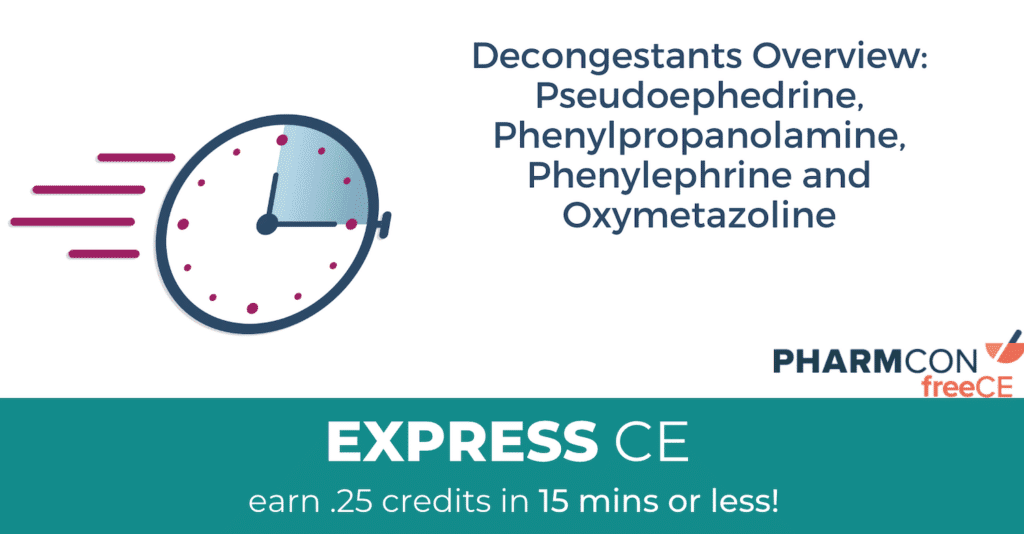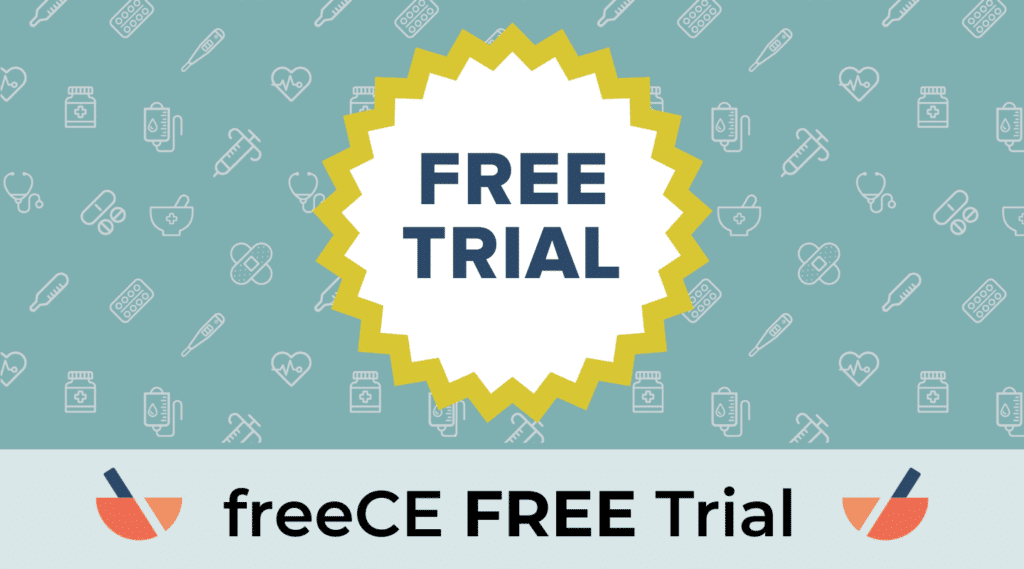My first exposure to rhinitis medicamentosa was as a student pharmacist. One of the pharmacists I worked with was “hooked” on Afrin®. Back in those days, the Schering representative dropped off boxes of 12 samples with about 5 ml in a bottle.
He had the sample bottles sitting around the pharmacy, and about every 2 hours would have a snort. I make my patients aware that the topical nasal decongestants can only be used for 3 days, and to think my first experience with rhinitis medicamentosa was with a pharmacist!
Pseudoephedrine can be a very useful drug as well. I joke with my patients that we need to see a driver’s license for a box of “cold pills,” but can hand out oxycodone without a driver’s license. At first, I thought the idea of Sudafed® behind the counter was ridiculous, until I went to a grocery store. One of the clerks said, “Mr. Kreckel I just sold a whole case of cold pills.” She described them as the ones in the red box. She was so proud of that sale. I informed her that she probably funded a meth lab for a month!
After that, I welcomed the idea of pseudoephedrine behind the counter with open arms!
Table of Contents
Oral Nasal Decongestants: Pseudoephedrine, Phenylpropanolamine, Phenylephrine
Pseudoephedrine
Pseudoephedrine (PSE) is both an alpha and beta agonist. It indirectly stimulates alpha-adrenergic receptors to cause vasoconstriction while directly stimulating beta-adrenergic receptors to cause bronchial relaxation. By constricting these swollen vessels in the nose and sinus region, it reduces swelling to allow the normal flow of air and mucus.
Pseudoephedrine is contraindicated in individuals with bronchitis, closed angle glaucoma, uncontrolled hypertension, coronary artery disease, urinary retention (BPH), peptic ulcer disease, concomitant MAOI therapy and during breast feeding. Additionally, this medication is classified as pregnancy category C.
- Pseudoephedrine and Hypertension: The effect of pseudoephedrine on blood pressure arises from its ability to indirectly activate alpha adrenergic receptors, leading to the release of norepinephrine. In patients with controlled hypertension, a systolic blood pressure increase of similar magnitude (1.2 mm Hg) can be demonstrated along with a heart rate increase of around 3 beats per minute. However, this is likely acceptable with proper management. It is important to note that higher doses and immediate release preparations are associated with greater increases in blood pressure. Additionally, a shorter duration of use was associated with greater increases in both systolic and diastolic blood pressure.
While this medication can be effective in treating nasal congestion, it is also used in the illicit manufacturing of methamphetamine. Any pharmacist working over the past 20 years remembers the legislation enacted as a result. On March 9, 2006, the Combat Methamphetamine Epidemic Act (CMEA) was enacted to combat the production and abuse of methamphetamine. This act included new regulations regarding the retail over-the-counter sale of ephedrine and pseudoephedrine. These products were now required to be placed behind the counter of pharmacies and they required a valid photo ID as well as a signature to purchase. Additionally, this legislation limits the daily maximum purchase to 3.6 grams of the base, the 30-day maximum to 9 grams and the mail order monthly maximum to 7.5 grams.
For example:
- 6 g of pseudoephedrine HCl is equivalent to 146 tablets if each tablet is 30 mg.
- 9 g of pseudoephedrine HCl is equivalent to 366 tablets if each tablet is 30 mg.
Shortly after restrictions were placed on pseudoephedrine, phenylephrine became abundant out front as the nasal decongestant that did not require such restrictions. However, it has been almost 20 years, and not a week goes by where some “meth lab” isn’t discovered.
A few different formulations have since come to market that inhibits the ability to convert pseudoephedrine to methamphetamine:
- Nexafed®: This product disrupts extraction and conversion of PSE to methamphetamine. Impede® technology uses inactive ingredients and a unique polymer matrix form a thick gel that blocks the extraction. In the direct conversion (one-pot) method, Nexafed® significantly disrupts the process, rendering the methamphetamine yield unsatisfactory.
- Zephrex-D®: This product also disrupts extraction of PSE to methamphetamine. Tarex®technology utilizes lipids to interrupt the conversion process.
Phenylpropanolamine
Phenylpropanolamine was first FDA approved in 1948 as a nasal decongestant and later used in over-the-counter weight loss products. While it is not considered a direct agonist, it exerts an indirect sympathomimetic effect that simulates the release of norepinephrine to activate adrenergic receptors. Due to this mechanism of action, this medication increases the risk of hemorrhagic stroke (even in small, divided doses).
Formulations:
- Dexatrim®: a weight loss product containing 75 mg of phenylpropanolamine
- Dimetapp®, Naldecon®, Comtrex®: a nasal decongestant containing phenylpropanolamine
These products were removed from market in 2000, by voluntary request of FDA. Additionally, in 2005, the medication was reclassified as “not safe and effective.”
Topical Nasal Decongestants: Oxymetazoline (Afrin®) and Phenylephrine (Neo-Synephrine®)
Note: Topical nasal decongestants should be used for a maximum of 3 days due to rhinitis medicamentosa or “rebound congestion.” These products may cause stinging or burning as well as increase nasal discharge.
Phenylephrine
While pseudoephedrine (PSE) has both alpha and beta agonist activity, phenylephrine (PE) is strictly a direct alpha-adrenergic agonist. Also of note, phenylephrine has a shorter half-life estimate of 2.5 hours while pseudoephedrine is estimated at 9-16 hours.
According to a systematic review/meta-analysis based on 8 unpublished studies that included 138 patients, phenylephrine 10 mg did not affect nasal airway resistance (NAR) more than placebo. Additionally, the mean maximal difference in relative change from baseline between phenylephrine and placebo was 10.1%. In conclusion, it was shown that phenylephrine 10mg is no more effective than placebo. Therefore, there is insufficient evidence that oral phenylephrine is effective for nonprescription use as a decongestant and the Food and Drug Administration should require additional studies to show the safety and efficacy of phenylephrine.
At its April meeting, the FDA’s Nonprescription Drugs Advisory Committee will consider removal of the classification “Generally Recognized as Safe and Effective” due to insufficient evidence of effectiveness.
Rhinitis medicamentosa
Rhinitis medicamentosa (RM), which is also referred to as rebound rhinitis, is a condition where nasal congestion is induced by excessive usage of topical vasoconstrictive medications, with Oxymetazoline being the most associated one. A similar condition can occur because of recreational use of intranasal cocaine.
Treatment:
- Stop cold turkey— opt to breathe through the mouth
- Replace pharmacological decongestant with nasal saline
- Dilute decongestant with saline; with each dilution use more saline and less decongestant
- Topical nasal corticosteroids can be used to reduce swelling
- Note: If nasal mucosa atrophy develops, surgical intervention may be necessary.
Normal Saline Nasal Spray
Normal saline is a safe, non-pharmacological ingredient that remains a safer alternative to other nasal decongestants. When it comes to infants and children, it is particularly the optimal choice due to its safety profile. Additionally, this medication has can be used with oral decongestants as it has no drug interactions, and it can even be used to treat rhinitis medicamentosa.
Have a great day on the bench!
References:
- Hatton, R. C., Winterstein, A. G., McKelvey, R. P., Shuster, J., & Hendeles, L. (2007). Efficacy and safety of oral phenylephrine: systematic review and meta-analysis. The Annals of pharmacotherapy, 41(3), 381–390. https://doi.org/10.1345/aph.1H679
- Nexafed®. (2014). Why Nexafed®? Retrieved June 20, 2023, from https://nexafed.com/why-nexafed/
- Salerno, S. M., Jackson, J. L., & Berbano, E. P. (2005). Effect of oral pseudoephedrine on blood pressure and heart rate: a meta-analysis. Archives of internal medicine, 165(15), 1686–1694. https://doi.org/10.1001/archinte.165.15.1686
- S. Food and Drug Administration. (2016). Phenylpropanolamine (PPA) information page. Retrieved from https://www.fda.gov/drugs/information-drug-class/phenylpropanolamine-ppa-information-page
- Wolters Kluwer Health, Inc. (2023). Oxymetazoline. Lexicomp Online. Retrieved June 20, 2023 from https://online.lexi.com/lco/action/doc/retrieve/docid/patch_f/1799562?cesid=3Xck0EWaXI4&searchUrl=%2Flco%2Faction%2Fsearch%3Fq%3DOxymetazoline%26t%3Dname%26acs%3Dfalse%26acq%3DOxymetazoline
- Wolters Kluwer Health, Inc. (2023). Phenylephrine. Lexicomp Online. Retrieved June 20, 2023 from https://online.lexi.com/lco/action/doc/retrieve/docid/patch_f/1799567?cesid=1CkuKtfwtG7&searchUrl=%2Flco%2Faction%2Fsearch%3Fq%3DPhenylephrine%26t%3Dname%26acs%3Dfalse%26acq%3DPhenylephrine
- Wolters Kluwer Health, Inc. (2023). Pseudoephedrine. Lexicomp Online. Retrieved June 20, 2023 from https://online.lexi.com/lco/action/doc/retrieve/docid/patch_f/7583?cesid=0lgoIbNTFW7&searchUrl=%2Flco%2Faction%2Fsearch%3Fq%3DPseudoephedrine%26t%3Dname%26acs%3Dfalse%26acq%3DPseudoephedrine
- Zephrex-D®. (2012) The Tarex® Difference. Retrieved June 20, 2023 from https://www.zephrex-d.com/tarex-difference






